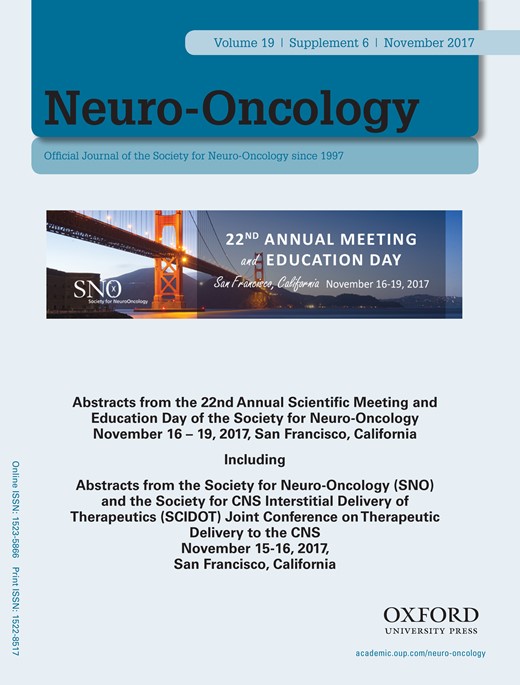-
PDF
- Split View
-
Views
-
Cite
Cite
Olayode Babatunde, Collin Kent, Yvonne Mowery, Frances McSherry, James E Herndon, Ato Wright, Robert Clough, William Sperduto, John P Kirkpatrick, MNGI-14. LONG-TERM OUTCOMES FOLLOWING SURGERY AND/OR RADIATION THERAPY IN PATIENTS WITH HIGH-GRADE MENINGIOMA, Neuro-Oncology, Volume 19, Issue suppl_6, November 2017, Page vi135, https://doi.org/10.1093/neuonc/nox168.552
Close - Share Icon Share
Abstract
Meningiomas are common intracranial neoplasms with a typically indolent natural history. However, WHO Grade II-III tumors account for ~20% of meningiomas and exhibit high rates of recurrence. Limited data are available regarding long-term outcomes for these patients.
Patients treated for WHO Grade II or III intracranial meningioma between 1993 and 2017 at our institution were analyzed retrospectively on an IRB-approved protocol. Overall (OS) and Progression-Free Survival (PFS) were calculated from date of high-grade diagnosis, estimated by Kaplan-Meier method, and compared by log-rank test. Group distributions were compared by Fisher’s exact test.
60 patients (30/30 male/female; median age 56, IQR 45 – 70) were identified. Most patients had grade II disease (46 grade II; 14 grade III). Nine patients had transformed from grade I to high-grade disease. Median follow-up was 11.5 years. Median OS was 8.6 years (95% CI: 6.7, 15.5). OS at 5, 10, 15, and 20 years from high-grade diagnosis was 68.1% (54.7%, 78.4%), 43.5% (28.7%, 57.4%), 35.3% (20.1%, 50.9%), and 29.4% (14.1%, 46.6%), respectively. PFS and OS did not differ significantly by grade. Patients received surgery (n=32), surgery + XRT (n=26), or definitive XRT (n=2). Eight patients also underwent systemic therapy. Surgical resections were Simpson grade IV in 34% of surgery only vs. 62% of surgery + XRT patients (p = 0.04). Median PFS was 1.5 years for surgery vs. 4.2 years for surgery + XRT (p = 0.009). Median OS was 8.5 years for surgery alone vs. 9.7 years for surgery + XRT (p = 0.51). After first salvage treatment, median PFS and OS were 1.6 and 6.3 years, respectively.
Patients with grade II-III meningiomas often have prolonged OS despite short PFS after initial treatment. Given the frequent recurrences and apparent efficacy of salvage therapy, these patients should be systematically monitored after diagnosis.
- radiation therapy
- institutional review board
- brain tumors
- follow-up
- meningioma
- salvage therapy
- surgical procedures, operative
- world health organization
- diagnosis
- neoplasms
- surgery specialty
- systemic therapy
- intracranial meningioma
- kaplan-meier survival curve
- log rank test
- excision
- indolent
- progression-free survival




